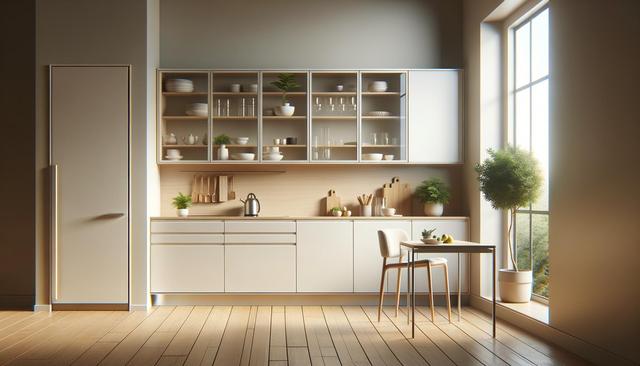Understanding the Impact of Color in Kitchen Cabinets
Color plays a significant role in defining the overall look and feel of a kitchen. When choosing kitchen cabinets, the color not only reflects your personal style but also sets the mood for the space. Neutral tones like white, beige, and gray remain popular for their versatility and ability to brighten a room. These shades work well in both modern and traditional kitchens, making them a safe yet stylish choice. On the other hand, darker hues such as navy, forest green, or charcoal can create a dramatic and elegant atmosphere, often preferred in more contemporary or sophisticated designs.
Choosing the right color involves considering several elements, including:
- Natural and artificial lighting in the kitchen
- Countertop and backsplash materials
- Flooring and wall paint choices
- Overall kitchen size and layout
Understanding how color interacts with these elements can help you make a well-balanced decision that enhances your kitchen’s aesthetic and functionality.
Classic Whites and Neutrals: A Timeless Choice
White and neutral kitchen cabinets have long been favored for their clean, timeless appeal. These colors provide a blank canvas that allows other design elements to stand out, such as hardware, appliances, and decorative accents. Their simplicity also makes them adaptable to various design styles, from farmhouse to minimalist.
Neutral shades offer several advantages:
- They make small kitchens appear larger and more open
- They complement a wide range of materials and finishes
- They are less likely to go out of style
While white cabinets remain a staple, soft neutrals like taupe, greige, and light tan are gaining popularity, offering warmth and subtle sophistication. Pairing these tones with natural wood textures or matte black hardware can add depth and character to your kitchen without overwhelming the space.
Bold and Dark Cabinet Colors for a Striking Look
For those who want to make a statement, bold and dark cabinet colors can add a sense of luxury and depth to the kitchen. Deep blues, rich greens, and matte blacks are increasingly being used to create contemporary and visually striking interiors. These colors work especially well in larger kitchens where there’s enough space to balance their intensity with lighter elements.
Dark and bold kitchen cabinets can be styled effectively by:
- Pairing with light countertops and backsplashes to create contrast
- Using metallic or brass hardware for a touch of elegance
- Incorporating open shelving or glass-front cabinets to break up solid blocks of dark color
While these shades require more maintenance to keep looking pristine, their unique appeal and modern edge make them a compelling choice for design-forward homeowners.
Earth Tones and Natural Wood Finishes
Natural wood finishes and earth-toned cabinets are making a strong comeback, driven by a growing preference for organic and sustainable design. These finishes bring warmth and texture into the kitchen, creating an inviting and grounded atmosphere. From light oak and birch to walnut and mahogany, wood cabinets offer a wide range of tones and grains to suit different tastes.
Reasons to consider natural wood or earth tones include:
- They introduce a tactile, organic element to the space
- They pair beautifully with stone, metal, and ceramic materials
- They age gracefully and can be refinished if needed
Whether you choose a clear stain to highlight the wood’s natural beauty or a tinted finish for a more customized look, these cabinets exude a timeless charm that’s both rustic and refined.
Two-Tone Cabinets and Color Combinations
Two-tone cabinets have emerged as a creative way to add personality and visual interest to kitchens. This approach involves using two different cabinet colors – often one for upper cabinets and another for lower ones – to create contrast and dimension. It’s a trend that allows homeowners to enjoy the benefits of bold colors without overwhelming their space.
Popular two-tone combinations include:
- White uppers with navy or forest green lowers
- Natural wood paired with soft gray
- Black base cabinets with light neutral wall cabinets
Successfully executing a two-tone scheme requires thoughtful planning. Consider how the colors complement each other and the rest of the kitchen’s elements. A balanced palette can tie together various textures and finishes, making the design cohesive and visually engaging.
Conclusion: Finding Your Perfect Cabinet Color
Choosing the right kitchen cabinet color is a meaningful decision that can significantly influence the atmosphere and style of your kitchen. Whether you prefer classic neutrals, bold hues, natural wood, or a combination of tones, your selection should align with your design preferences and lifestyle needs. Take time to explore samples, visualize the options in your space, and consider how each choice fits with other design elements. By staying true to your taste and considering practical aspects, you can create a kitchen that feels both functional and uniquely yours.




Leave a Reply